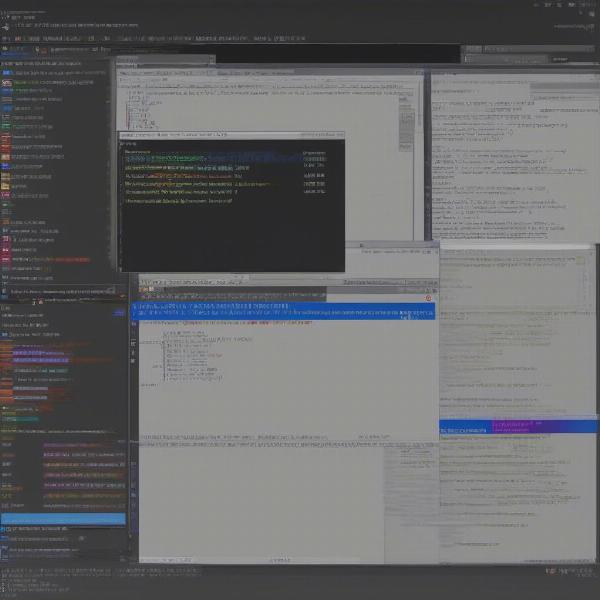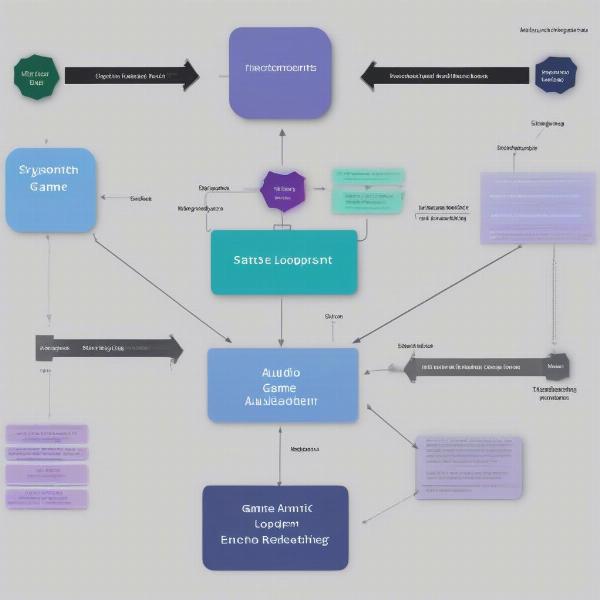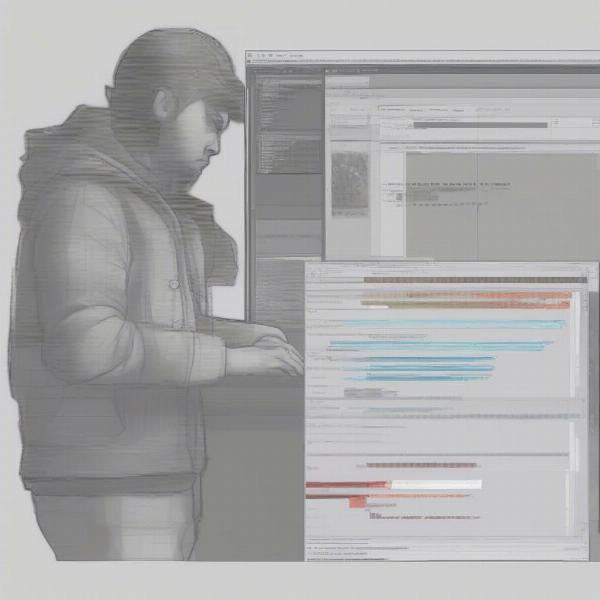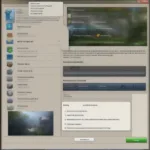Creating your own game engine can be a daunting but rewarding endeavor. It allows for unparalleled control over your game’s mechanics and performance. This guide breaks down the key steps involved in how to make a game engine, from core concepts to essential components, providing a solid foundation for aspiring game developers.
Understanding the Basics of Game Engine Development
Before diving into the nitty-gritty of coding, it’s crucial to grasp the fundamental concepts behind game engines. A game engine is essentially a software framework providing functionalities like rendering graphics, handling input, managing physics, and playing audio. Understanding these core elements will pave the way for a smoother development process. Think of it like building a house: you need a blueprint before laying the first brick. Similarly, a solid understanding of the basic principles is the blueprint for a successful game engine.
Key Components of a Game Engine
Several interconnected components work together to form a functional game engine. These include:
- Renderer: Responsible for drawing the visuals, from simple 2D sprites to complex 3D models. A powerful renderer is crucial for creating visually appealing games.
- Physics Engine: Simulates realistic interactions between objects, including gravity, collisions, and forces. This is what makes your game world feel believable and interactive.
- Input System: Handles player input from various devices like keyboards, mice, gamepads, and touchscreens. A responsive input system is essential for a smooth and enjoyable player experience.
- Audio System: Manages sound effects and music, adding depth and immersion to the game. The right sound can dramatically enhance the player’s emotional connection to the game.
- Game Loop: The heart of the engine, constantly updating the game state and rendering the scene. This continuous cycle ensures that the game runs smoothly and reacts to player input.
Choosing the Right Programming Language and Libraries
Selecting the right tools is paramount to success. C++ is a popular choice due to its performance and control, but other languages like C# and Java offer easier development paths. Libraries like OpenGL, DirectX, and Vulkan provide powerful graphics rendering capabilities. Choosing the right tools depends on your project’s specific needs and your comfort level with different programming languages.
Setting up Your Development Environment
Once you’ve chosen your language and libraries, you’ll need to set up a suitable development environment. A good IDE (Integrated Development Environment) like Visual Studio, Xcode, or Eclipse can significantly improve your workflow. Setting up a dedicated workspace will help you stay organized and focused.
 Setting up a game engine development environment with IDE and code editor
Setting up a game engine development environment with IDE and code editor
Designing the Engine Architecture
A well-defined architecture is essential for a maintainable and scalable game engine. Consider using a modular design that separates different functionalities into independent components. This will make it easier to update and modify the engine as your game evolves. Think of it like building with LEGOs – each brick represents a module, and you can combine them to create complex structures.
Implementing Core Game Engine Features
Start by implementing the essential components: the renderer, physics engine, input system, and audio system. You can use existing libraries or build your own from scratch. Focus on creating a solid foundation before adding advanced features.
 Implementing core features like rendering, physics, and input in a game engine
Implementing core features like rendering, physics, and input in a game engine
Building the Game Loop
The game loop is the heart of your engine. It continuously updates the game state, handles input, and renders the scene. A well-optimized game loop is crucial for smooth performance.
Adding Game Logic and Features
Once the core components are in place, you can start adding game-specific logic and features. This might include AI, scripting, animation, and networking. This is where you bring your game world to life.
 Adding game logic and features to a custom-built game engine
Adding game logic and features to a custom-built game engine
Testing and Debugging
Thorough testing and debugging are critical throughout the development process. Use debugging tools to identify and fix issues. Regular testing will ensure a stable and enjoyable game experience.
Optimization and Performance Tuning
Optimizing your game engine for performance is essential for smooth gameplay. Profile your code to identify bottlenecks and optimize resource usage.
How to Choose a Game Engine if Building One Seems Too Challenging?
Developing a game engine from scratch requires a significant time investment and technical expertise. If you’re just starting out, consider using existing game engines like Unity or Unreal Engine. These engines provide a robust foundation and a wealth of tools and resources, allowing you to focus on creating your game.
Conclusion
Learning how to make a game engine is a challenging but rewarding journey. By understanding the core components, choosing the right tools, and following a structured development process, you can create a solid foundation for your games. Remember to start with the basics, test thoroughly, and optimize for performance. Building your own game engine offers unparalleled control over your game’s mechanics and allows you to bring your unique vision to life.
FAQ
- What programming language is best for making a game engine? C++ is a popular choice due to its performance, but other languages like C# and Java can also be used.
- Do I need to know advanced math to make a game engine? A basic understanding of linear algebra and calculus is helpful, but you can learn as you go.
- How long does it take to make a game engine? It depends on the complexity of the engine and your experience level. It can take anywhere from several months to several years.
- Can I make money from my game engine? Yes, you can license your engine to other developers or use it to create your own games and sell them.
- What are some good resources for learning game engine development? There are numerous online tutorials, books, and communities dedicated to game engine development.
- Is it necessary to build my own game engine? No, you can use existing game engines like Unity or Unreal Engine.
- What’s the first step in making a game engine? The first step is understanding the basic concepts and choosing the right programming language and tools.

